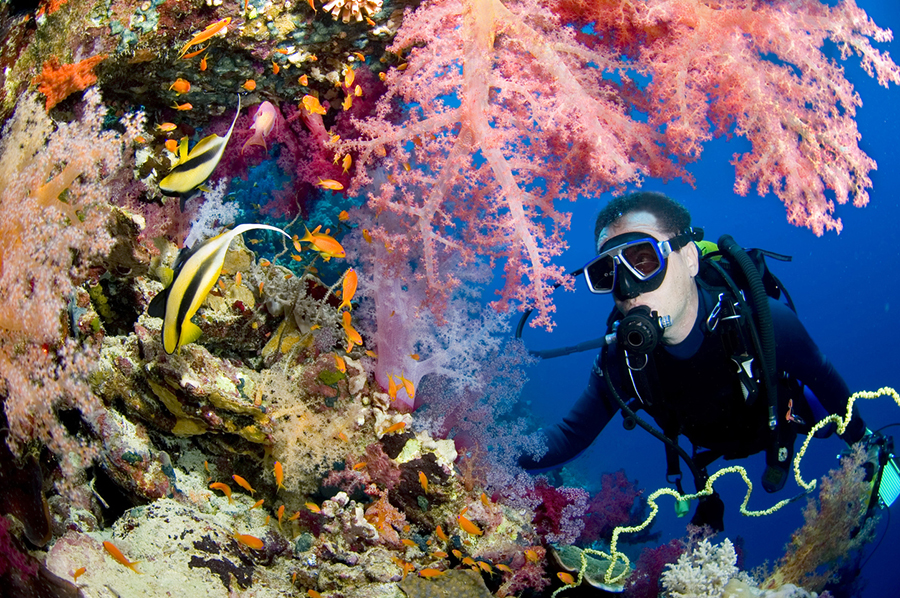Cozumel is one of the top destinations for diving in the world. This area houses the largest barrier reef system in the Western
Hemisphere and is part of the second largest barrier reef system in the world, the Meso-American reef system, which spans almost 175 miles (280 km) of ocean between the Gulf of Mexico and Honduras. Its clear water (visibility over 100 ft), warm temperatures of 78F to 84F and its amazing marine life makes diving here a true heaven on earth experience. On a typical dive trip you will most likely see turtles, groupers, green moray eels, nurse sharks, and lots of colorful tropical fish. Not to mention the awesome coral formations and colorful sponges. If you are lucky, you could see eagle rays, seahorses or black-tip reef sharks.
Here are some of our favorite spots:
Palancar: One of Cozumel’s most memorable reefs
What to expect: Large caverns and underwater highways. Common spot for sighting turtles, snappers, angelfish, bermuda
chub, rays, jacks and triggerfish.
Colombia Wall: Impressive drop-off with huge coral pinnacles
What to expect: massive coral pillars, caves and tunnels, home to colorful fish, sponges, blue tang, eagle rays, turtles and large
barracuda.
Tunich Wall: vibrant and colorful reef
What to expect: Friendly groupers and turtles
Paseo del Cedral: spectacular caverns and tunnels, great for photographers.
What to expect: grunts, snappers, porkfish and probably lobster, scorpionfish, crabs, and green moray eels.
Cordona: Excellent shallow reef area
What to expect: lots of juvenile fish and anemones
San Francisco: Excellent visibility, spectacular coral and brightly colored sponges, great for photographers
What to expect: popular for sighting of sharks.
Yucab: Rich variety of fish and more than a thousand coral formations
What to expect: Groupers, moray eels, barracudas, spotted filefish, coral pinnacles covered with sea fans, gorgonains and sea whips, coral & sponge snappers, grunts and margates
Chankanaab: Good location for night diving
What to expect: Large coral mounds, sponges, small black coral trees, gorgonians, sea fans, scorpionfish, feather duster worms and flamingo tounge.

